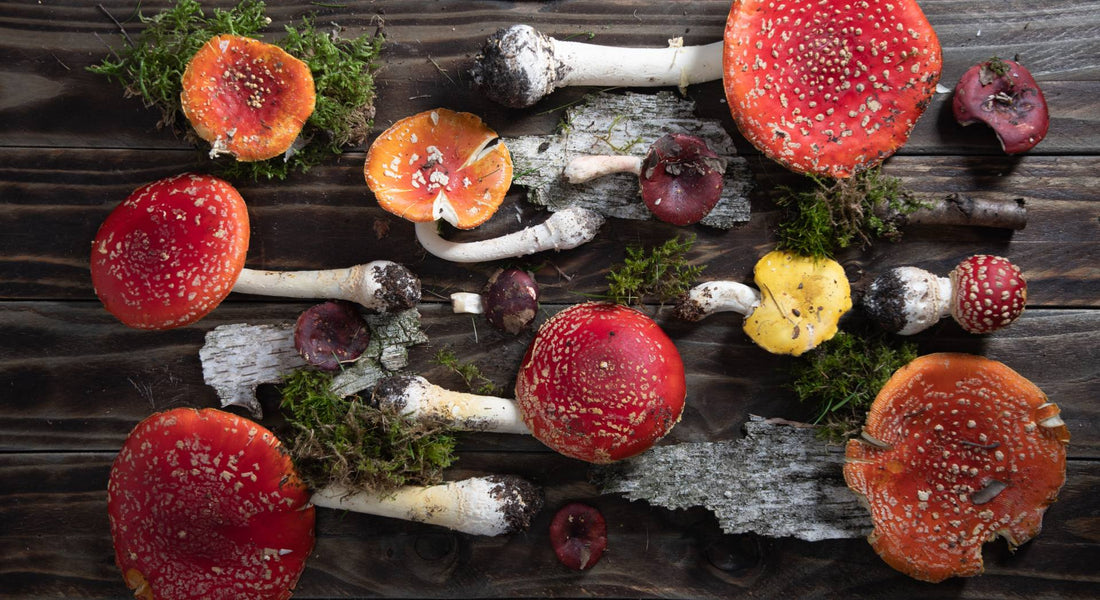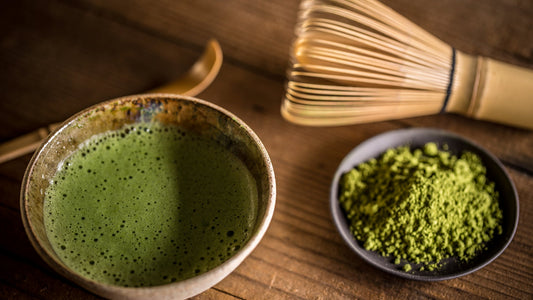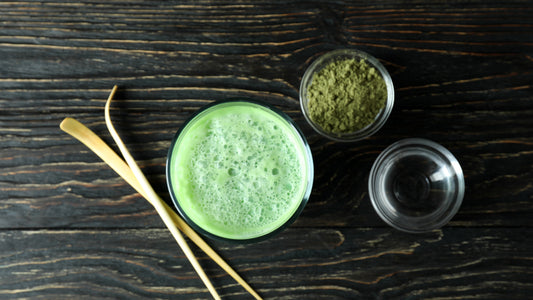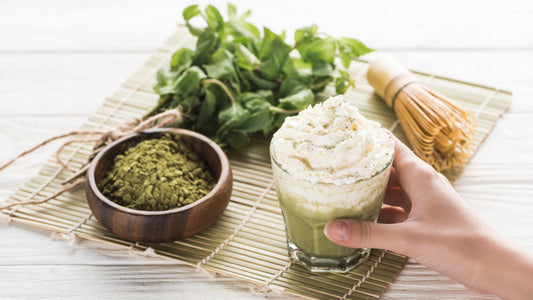Understanding Amanita Muscaria Mushrooms: Nature's revitalizing Fungi
Welcome to the captivating world of Amanita Muscaria mushrooms, a species that has fascinated cultures throughout history. In this blog, we will dive deep into the enigmatic nature of these mushrooms, exploring their unique characteristics, historical significance, cultural associations, and their potential impact on human consciousness. Get ready to unlock the secrets of Amanita Muscaria and gain a deeper understanding of their allure and transformative potential.

What Is Amanita muscaria?
Amanita muscaria, commonly known as fly agaric, is a species of mushroom that belongs to the Amanita genus. It is one of the most recognizable and iconic mushrooms due to its distinct appearance. Amanita muscaria features a large, brightly colored cap that ranges in color from vibrant red to orange or yellow. The cap is typically covered with white spots or warts.
The mushroom's stem is white and can be quite thick and sturdy. It is often covered with a partial veil, which forms a ring or skirt-like structure around the stem. As the mushroom matures, the cap may expand, revealing the white gills underneath.
Amanita muscaria mushrooms are found in various regions around the world, including North America, Europe, and Asia. They are typically associated with coniferous and deciduous forests, forming mycorrhizal associations with trees.
It is important to note that Amanita muscaria mushrooms are considered psychoactive and contain compounds that can induce altered states of consciousness. The primary psychoactive compound found in these mushrooms is muscimol. Ibotenic acid, another compound present in Amanita muscaria, is converted to muscimol through a process called decarboxylation. These compounds interact with the brain's receptors and can produce a range of effects on human perception and cognition.
Throughout history, Amanita muscaria mushrooms have been used for various purposes, including spiritual and shamanic practices. They have played a significant role in folklore and mythology, often associated with magic, enchantment, and transformation.
Is Amanita Muscaria Poisonous?
Amanita muscaria mushrooms are classified as potentially poisonous due to the presence of toxins, including ibotenic acid. These toxins can cause adverse effects such as nausea, vomiting, and dizziness. However, when the mushrooms are properly dried, cooked, or processed, the ibotenic acid is converted to muscimol, the primary psychoactive compound responsible for the mushroom's effects. This conversion reduces the toxicity and increases the psychoactive potency.
Proper preparation is essential to minimize the risk of toxicity. Drying or cooking the mushrooms through traditional methods helps to decrease the levels of ibotenic acid. It is important to note that individual tolerance and sensitivity can vary, and some people may experience adverse reactions even with proper preparation. It is also crucial to consider any underlying health conditions or allergies that may increase the risk of negative effects.
To ensure safety, it is recommended to approach Amanita muscaria mushrooms with caution and responsible use. Starting with a low dose and gradually increasing if desired allows individuals to gauge their tolerance and response. Consulting with knowledgeable sources, such as healthcare professionals or mycologists, is advisable, especially if there are any concerns or doubts about consumption.
Historical Significance and Cultural Associations
- Ancient Wisdom and Shamanic Traditions:
Amanita Muscaria mushrooms boast a long-standing history of use in ancient cultures and indigenous traditions. Shamans, the mystical guides of their communities, consumed these mushrooms to unlock altered states of consciousness and embark on profound spiritual experiences. The mushrooms served as a means for shamans to connect with the spirit world and gain invaluable insights and guidance.
- Legends, Folklore, and Enchantment:
These mushrooms have also etched their way into the realm of legends and folklore, weaving tales of magic and mystery. Throughout different cultures, they are associated with enchanting elements and often find their place in fairy tales, artwork, and literature. In European folklore, Amanita Muscaria mushrooms are renowned for their association with luck and transformation.
- Contemporary Perspectives and Utilization:
Fast forward to the present, Amanita Muscaria mushrooms continue to be used for various purposes. Some individuals explore their psychoactive properties responsibly, seeking unique experiences and personal growth. These mushrooms have also attracted attention for their potential therapeutic benefits, such as mood regulation and spiritual exploration.
Amanita muscaria: Does It Make You High?
Amanita muscaria mushrooms can indeed produce psychoactive effects and induce a "high" or altered state of consciousness. The primary psychoactive compound responsible for these effects is muscimol. When consumed in sufficient quantities, muscimol interacts with brain receptors, resulting in a range of experiential effects.
The effects of Amanita muscaria can vary from person to person and depend on factors such as dosage, individual sensitivity, and preparation method. Commonly reported effects include euphoria, visual distortions, altered perception of reality, sedation, and enhanced creativity.
It's important to note that the experience with Amanita muscaria is distinct from other psychedelic substances like psilocybin mushrooms or LSD. The effects are often described as dream-like, tranquil, and introspective. The intensity and nature of the high can be influenced by the dose consumed, individual body chemistry, and the setting in which the mushrooms are taken.
Responsible use and caution are crucial when consuming Amanita muscaria mushrooms. These mushrooms contain toxins and can have varying effects on individuals. It is recommended to start with a low dose and gradually increase if desired, while being mindful of individual reactions and consulting with knowledgeable sources. Proper preparation methods, such as drying or cooking, can help reduce the risk of toxicity and enhance the potency of the psychoactive compounds.
In summary, Amanita muscaria mushrooms can produce a high or psychoactive experience with effects that vary between individuals. Responsible use, individual sensitivity, and proper preparation methods are important for a safe and enjoyable experience.
To address common inquiries, here are answers to some frequently asked questions about Amanita
Q1: Are Amanita Muscaria mushrooms safe to consume?
A: Amanita Muscaria mushrooms are generally considered non-lethal, but caution is necessary. They contain toxins that can cause adverse effects if consumed in large quantities or not properly prepared. The primary toxins are ibotenic acid and muscimol. Ibotenic acid can lead to symptoms like nausea and dizziness, but it converts to muscimol when the mushrooms are dried or cooked. Muscimol is the main psychoactive compound responsible for the mushroom's effects.
To ensure safety, it's important to prepare Amanita Muscaria mushrooms properly through drying, cooking, or making infusions. This reduces the levels of ibotenic acid, decreasing the risk of toxicity and increasing the potency of muscimol. Responsible use involves researching and consulting knowledgeable sources, starting with a low dose, and gradually increasing it to gauge individual sensitivity. Consider any personal health conditions, allergies, or medications that may interact with the mushrooms. If in doubt, consult a healthcare professional or mycologist for personalized advice.
Q2: How should Amanita Muscaria mushrooms be prepared and consumed?
Proper preparation is crucial to ensure the safe consumption of Amanita Muscaria mushrooms and to maximize their potential benefits. Here are some recommended methods for preparing and consuming these mushrooms:
- Drying: Drying Amanita Muscaria mushrooms is a common method to reduce their toxicity and enhance their potency. To dry the mushrooms, carefully clean them to remove any dirt or debris, and then spread them out in a well-ventilated area or use a food dehydrator set to a low temperature. Once the mushrooms are completely dry and crispy, they can be stored for future use or used in various preparations.
- Cooking: Cooking Amanita Muscaria mushrooms can also help reduce their toxicity and activate their psychoactive compounds. It is recommended to cook the mushrooms thoroughly to ensure the conversion of ibotenic acid to muscimol. Cooking methods such as boiling or sautéing in oil are commonly used. The heat breaks down ibotenic acid and enhances the potency of muscimol. Remember to cook the mushrooms at a temperature that is high enough to facilitate this conversion.
- Making Infusions: Another method to prepare Amanita Muscaria mushrooms is by making infusions. This involves steeping the dried mushrooms in hot water or other liquids like tea or honey. The hot liquid helps extract the active compounds from the mushrooms. After the infusion is prepared, it can be consumed directly or used as an ingredient in other recipes or beverages.
When consuming Amanita Muscaria mushrooms, it is important to start with a low dose and gradually increase if desired. This allows you to gauge your individual sensitivity and response to the mushrooms. It is also advisable to be mindful of the setting in which you consume them, choosing a comfortable and safe environment.
Remember, responsible use and cautious experimentation are key when consuming Amanita Muscaria mushrooms. It is always recommended to thoroughly research and consult knowledgeable sources before preparation and consumption. If in doubt, seek guidance from experienced individuals or professionals in mycology or psychedelic substances.
Q3: Are there any potential risks or side effects associated with Amanita Muscaria consumption?
Here are the potential risks and side effects associated with the consumption of Amanita Muscaria mushrooms:
- Gastrointestinal discomfort: Nausea, vomiting, and stomach cramps may occur due to the presence of ibotenic acid in the mushrooms. Proper preparation can help reduce the levels of ibotenic acid and minimize gastrointestinal discomfort.
- Dizziness and confusion: The psychoactive compounds in Amanita Muscaria mushrooms, particularly muscimol, can cause dizziness and confusion. Effects may vary depending on individual sensitivity and dosage.
- Allergic reactions: Some individuals may experience allergic reactions, such as skin rashes, itching, or respiratory symptoms, when consuming Amanita Muscaria mushrooms. Those with known mushroom or fungal allergies should exercise caution.
- Variable potency: The potency of Amanita Muscaria mushrooms can vary significantly, making it challenging to determine the exact dose needed for desired effects. Starting with a low dose and gradually increasing while monitoring individual response is recommended.
- Interaction with medications and health conditions: Amanita Muscaria mushrooms may interact with certain medications or health conditions. Consultation with a healthcare professional is advisable if you have pre-existing medical conditions or are taking medication.
Conclusion:
Amanita Muscaria mushrooms hold a profound mystique that has captivated humans for centuries. Their vibrant appearance, rich history, and potential effects on consciousness continue to inspire individuals to embark on transformative journeys of the mind. However, it is vital to approach their use with respect, caution, and responsibility. By understanding their nature, historical context, and potential effects, we can navigate the realm of Amanita Muscaria mushrooms with reverence and an appreciation for their enigmatic power. So, venture forth with curiosity, but always remember to tread responsibly and with an informed mind.




